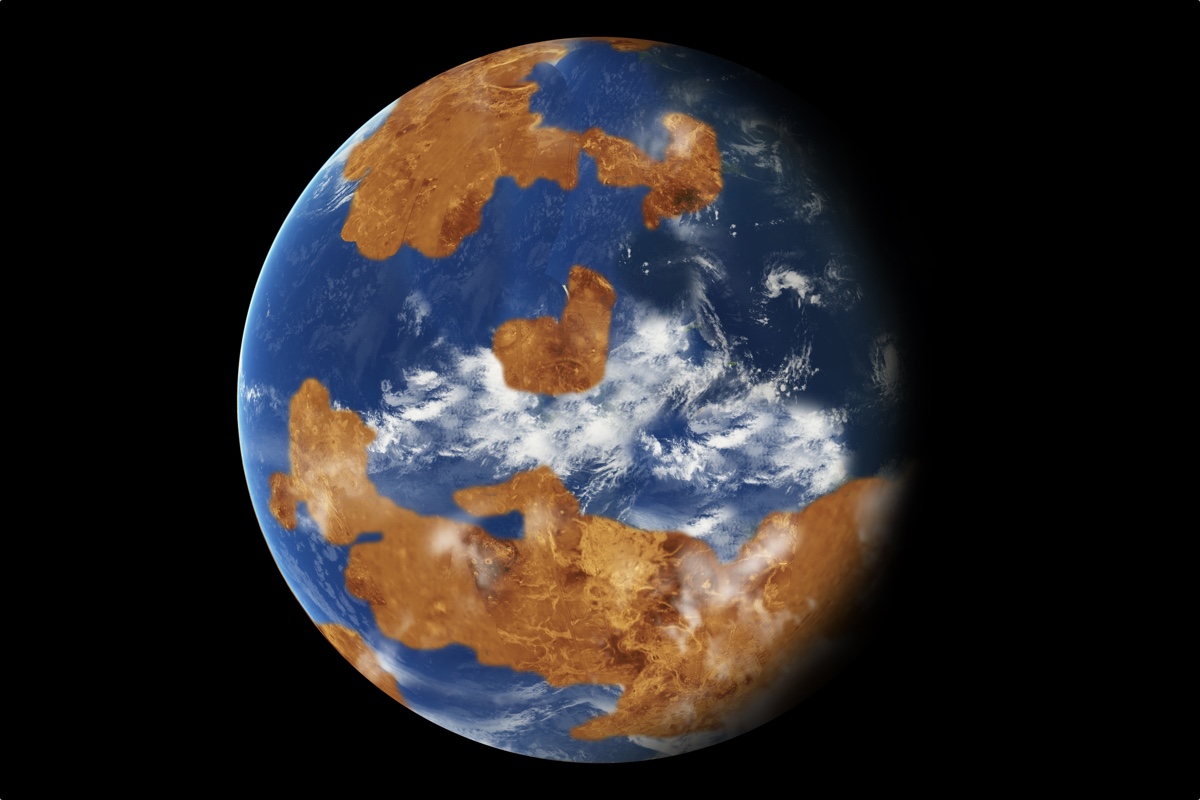Stephen Hawking Is Worried About Humanity's Future

Stephen Hawking turns space explorer in his second-ever episode of "Favorite Places," an Emmy-winning series that sees the famed physicist explore Venus, the sun and deep space.
Hawking narrates the CGI-heavy episode, which premieres on CuriosityStream.com today (Jan. 8). In the episode, Hawking is piloting a spacecraft past his childhood vacation spot in Dorset, England, expounding on his search for the "theory of everything" — an understanding of humanity's place in the universe and why the laws of physics seem so precisely tuned to support life in the solar system.
"It's these fundamental mysteries that drive me on my quest for a theory of everything," Hawking says. [8 Shocking Things We Learned From Stephen Hawking's Book]
One-way trip
The episode takes Hawking to his favorite places. First Dorset, where he spent childhood summers searching for fossils; then Venus, where the atmosphere is so hot and under such pressure that near the surface, it isn't a gas but a supercritical fluid. Venus is an example of runaway greenhouse warming, Hawking says, something that could happen on Earth if carbon dioxide and other greenhouse gases in the atmosphere reach extreme levels.
Venus may have been a much more welcoming place about 4 billion years ago, according to NASA. Astronomers believe the planet once had liquid water but underwent a period of runaway warming that burned off the oceans and pushed the temperature of the surface to 864 degrees Fahrenheit (462 degrees Celsius). As water vapor from the planet's warming oceans amassed in the atmosphere, it likely trapped ever more heat, according to a 2002 NASA study, creating a positive feedback cycle. Venus illustrates the importance of small differences in determining whether a planet can support complex life, according to Hawking, and demonstrates the reality of the greenhouse effect.
"Next time you meet a climate change denier, tell them to take a trip to Venus," Hawking says. "I will pay the fare."
Stars are born
Hawking's fantastical journey soon takes him to the surface of the sun, where viewers hear a simulation of the sun's "heartbeat," or the noise of its nuclear fusion. He then visits deep space to witness the birth of a star, based on Hubble telescope imagery from the 1990s. The raw material for this creation comes from the remnants of ancient giant stars, Hawking says.
Get the Space.com Newsletter
Breaking space news, the latest updates on rocket launches, skywatching events and more!
"In order for a sun and planets like ours to be born, an entire generation of giant stars had to live and die before them," he says. "And here is a remarkable thing: It takes around 7 billion years for that to happen. Our sun is just over 4.5 billion years old and the universe is only 13.7 billion. So, you and I came into existence at precisely the time it became possible, and not a moment later."
It seems miraculous, Hawking says, but attributing it to miracles makes it unknowable, and he needs to know. He's now supporting a new project called "Breakthrough Starshot," which aims to use nano-size spacecraft, traveling 100 million mph (160 million km/h), to explore the far reaches of the universe. The first planned destination for these tiny spacecraft is Hawking's last favorite place in the episode: Proxima Centauri, a star in the Alpha Centauri system, where the physicist finds more warnings of intelligent life's ability to destroy itself.
Original article on Live Science.
Join our Space Forums to keep talking space on the latest missions, night sky and more! And if you have a news tip, correction or comment, let us know at: community@space.com.

Stephanie Pappas is a contributing writer for Space.com sister site Live Science, covering topics ranging from geoscience to archaeology to the human brain and behavior. She was previously a senior writer for Live Science but is now a freelancer based in Denver, Colorado, and regularly contributes to Scientific American and The Monitor, the monthly magazine of the American Psychological Association. Stephanie received a bachelor's degree in psychology from the University of South Carolina and a graduate certificate in science communication from the University of California, Santa Cruz.










